#Breton folklore
Text
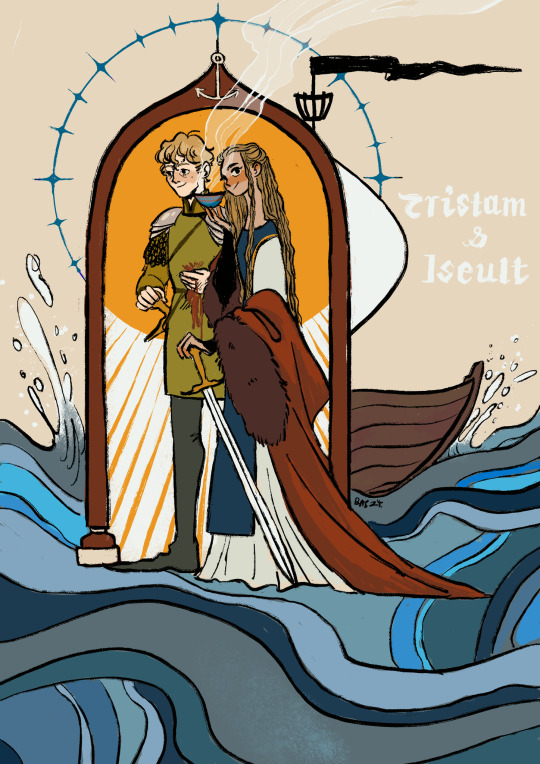
folkbruary #6
tristam & iseult
#ach this tale gets me every time#folk art#tristam and iseult#tristan and isolde#brythonic folklore#Cornish folklore#breton folklore#folklore art#fantasy art#cover art#digital illustration#folkbruary#folkbruary 24#basil draws
33 notes
·
View notes
Text
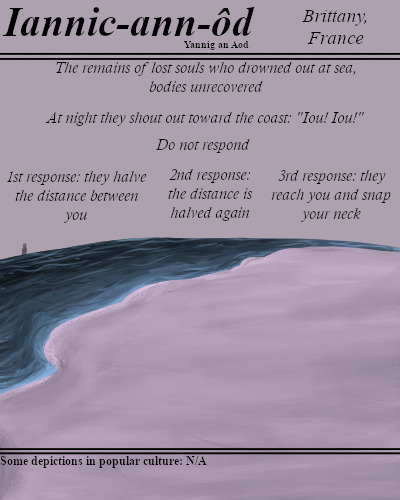
Take care and be aware, it takes only three return shouts for this spirit to reach you if it believes you are mocking them.
#BriefBestiary#bestiary#digital art#fantasy#folklore#legend#myth#mythology#iannic-ann-ôd#yannig an aod#ghost#spirit#undead#Iou! Iou!#lost soul#monster#breton folklore#breton legend
34 notes
·
View notes
Text
Groac’h

Image © Jeanne Prigent, accessed at her ArtStation here
[It’s apparently walrus week on the World Tour, as we have a second tusked aquatic monster. The groac’h is a Breton fairy, sometimes kindly and sometimes wicked as fey so often are. Way back in the day, someone at Paizo (was it James Jacobs? Jason Buhlman?) said that hag was a category not tied to monster type (as seen in the night hag), and that fey hags were a definite possibility. That was not actualized in PF1e. So I figured that the groac’h would be a good candidate for a fey hag.]
Groac’h
CR 9 CN Fey
This thin humanoid looks like an old woman, with long clawed fingers and long webbed toes. Two tusks like those of a walrus grow from her mouth.
Hags are products of the Material Plane, but due to their magic powers and cruel curiosity may end up on other planes. A cadre of sea hags moved to the First World in order to access the strange magic and ebullient life force found there. Over time, some of these hags changed into the groac’h. Groac’h are not as wicked as other hags are, but are just as capricious. They are most interested in breaking up power structures, from kingdoms to families, and may do so with gifts, guile or magical force. They are obsessed with politeness, and minding etiquette may mean the difference between leaving a groac’h’s company with magical gifts, and never leaving.
A groac’h does not like to fight fair, and tries to ensure that any combat she enters is of her own volition. Most groac’hs carry at least one net, sometimes a magical one, and catch victims in it. While the captive struggles to break free, the groac’h uses her magic on them—transforming an entangled victim into a fish or frog is a popular tactic. Although groac’hs are not as hideous to look upon as a sea hag, they can channel the same evil eye curse to disable their enemies. Groac’hs rarely fight to the death; if a battle is turning against them, they transform into a faster shape or create a fog cloud to hinder pursuit.
Most groac’hs are somewhat vain, and spend more time in shapeshifted form than their natural appearance. Beautiful maidens, majestic swans and sleek dolphins are popular forms to take. They collect vast amounts of treasure, but are free about giving away or trading it to further their goals or enhance their prestige. They eat mostly seafood—captives transformed into fish are often served to guests as a power play. A groac’h is still hag enough to join a coven, but usually their covens are of three groac’hs. A coven with at least one groac’h member adds the following spell-like abilities to their coven magic: fluid form, freezing sphere, summon monster VI (animals with a swim speed or elementals with the water subtype only).
Groac’h CR 9
XP 6,400
CN Medium fey (aquatic, extraplanar, shapechanger)
Init +6; Senses darkvision 60 ft., low-light vision, mistsight, Perception +13
Defense
AC 23, touch 17, flat-footed 15 (+6 Dex, +1 dodge, +5 natural)
hp 112 (15d6+60)
Fort +9, Ref +15, Will +11
DR 10/cold iron; SR 20
Defensive Abilities evasion
Offense
Speed 30 ft., swim 50 ft.
Melee 2 claws +15 (1d6+3), bite +15 (2d4+3/x4)
Ranged masterwork net +16 (entangle)
Special Attacks augmented critical, evil eye, spell captive
Spell-like Abilities CL 12th, concentration +16 (+20 casting defensively)
At will—fog cloud, hydraulic torrent, ray of enfeeblement (DC 15)
3/day—bestow curse (DC 17), quickened blur, control water, suggestion (DC 17)
1/day— baleful polymorph (DC 19), dominate person (DC 19), geyser (DC 19)
Statistics
Str 16, Dex 23, Con 18, Int 15, Wis 10, Cha 19
Base Atk +7; CMB +13; CMD 30
Feats Agile Maneuvers, Combat Casting, Deceitful, Defensive Combat Training, Dodge, Exotic Weapon Proficiency (net) (B), Iron Will, Quicken SLA (blur), Weapon Finesse
Skills Acrobatics +19, Bluff +21, Climb +16, Diplomacy +17, Disguise +21, Intimidate +17, Knowledge (local, nature) +15, Perception +13, Sense Motive +13, Stealth +19, Swim +24
Languages Aquan, Common, Sylvan
SQ amphibious, change shape (animal or humanoid, polymorph)
Ecology
Environment any coastal and underground (First World)
Organization solitary or coven (1-3 mixed hags)
Treasure double standard (masterwork net, other treasure)
Special Abilities
Augmented Critical (Ex) A groac’h’s bite attack deals x4 damage on a successful critical hit.
Evil Eye (Su) Three times per day, a groac’h can cast her dire gaze upon any single creature within 30 feet. The target must succeed on a DC 21 Will save or be staggered as strange nebulous distress and a gnawing sense of impending doom plagues the victim. If a groac’h uses her evil eye on someone already afflicted by this curse, the victim must make a DC 21 Fortitude save or be overwhelmed with fright and collapse into a comatose state for 3 days. Each day that passes, the comatose victim must make a DC 21 Fortitude save or perish. The evil eye is a mind influencing fear effect. The save DCs are Charisma-based. Evil Eye Curse: Gaze—failed save; save Will DC 21; frequency 1/day; effect staggered (or fall comatose if already under the effects of the evil eye).
Spell Captive (Su) A creature entangled in a net thrown by a groac’h suffers a -2 penalty to all saving throws against her evil eye and spell-like abilities.
56 notes
·
View notes
Text
Deadly fall: The Ankou
THE ANKOU
Category: Breton folklore
The Bretagne region of France is quite unique in many ways: most notably it is the French region where Celtic culture and Celtic heritage is the strongest. This results in numerous beliefs and legends in a variety of supernatural beings, a strong and complex regional folklore, and one of the most famous entities said to exist in Bretagne is “L’Ankou”, The Ankou, a death entity whose name comes from the old Welsh “Anheu/Anghau” and the Cornish “Ankow”.
The Ankou is not death itself – this is a point the legends around him are very clear about. The Ankou is rather the “servant of death”. His job is the one of a psychopomp : he appears to take the souls of the deceased in the afterlife. The Ankou travels and takes the souls away in a creaking cart known as “karr an Ankou/karrig an Ankou” in the Breton language (the Ankou’s chariot). When someone hears the squeaking wheels of the Ankou’s wagon, it means they (or a member of their family) will soon die. In a similar way, if someone sees the Ankou it means they will die in the year. In the sea-side regions, the Ankou doesn’t take the inland roads : instead of a cart, he drives a small boat called the “Bag Noz” (The Night Boat), taking the dead by sea.
The Ankou’s physical appearance is the one of a very tall and very gaunt man, with long white hair, and its face half-hidden by a large-brimmed hat. While sometimes he just appears like a very skinny old man, all dressed in black (black hat or black cloak), other times it is said his face is hideous and reminds people of a skull, with no nose, a wide mouth going from ear to ear, and black holes instead of eyes, with inside them two little lights like candle flames. In several local variations, the Ankou is in fact confused with the “Grim Reaper” figure and is depicted as a skeleton wrapped in a funeral shroud. But no matter how he is depicted, the Ankou is always wielding his great and terrible scythe. The fascinating thing with the Ankou is that his scythe is not a regular scythe, unlike for example the one wielded by a typical Grim Reaper : the Ankou’s scythe has its blade reversed, so that the cutting edge is on the outside, not on the inside. It is because when the Ankou “reaps” the dead, he doesn’t make a movement that bring the blade towards him – rather he throws the blade in front of him to “cut” the dead faster and more efficiently. (Though the legend explicitly describe this reverse-scythe, many old statues have him with just a regular scythe).
The Ankou is also sometimes said to be the “watcher” and “guardian” of grave-yards, making sure its souls do not escape and that no living comes to trouble the graves – though sometimes this role is rather attributed to one or a couple of ghosts, usually the last deceased of the year. While as I said the Ankou is not death but merely its servant and “henchman”, charged with collecting the souls of the dead, some Breton proverbs give a bit more of power and independency to the Ankou – for example when there is more death than usual in a year, Breton people used to say “War ma fé, heman zo eun Anko drouk” (On my faith, this one is a nasty Ankou). [The explanation of which comes below].
- - - - - - - -
While the Ankou appears as this iconic, ominous, supernatural figure, the Breton legends don’t actually suggest that he is one full entity (despite his appearance, methods and name never changing). Rather, many tales claim that the “Ankou” is just a title, a role taken on by various souls. For example one legend claims that the last male dead of the year, at the end of December, is to become the Ankou for the next year, while the first male dead of the year is to become the “komis an Ankou” (the Ankou’s clerk/employee), the personal servant and assistant of the Ankou. The “Bagel Noz” variation also has stories of this kind: in one, the driver of the “Night Boat” is supposed to be the last men to have drowned in the year, while another variation claims that the leader of the Bagel Noz is rather the first male dead of the year.
Another creepy trivia about the Ankou: one legend claims that he can fully rotate his head on his neck, so that he can look everywhere when he travels and so that no dead or living can sneak behind his back.
There are much more bizarre and morbid trivia about the Ankou or his servants, in fact there are entire books written about the "Legends of Death" and the death folklore of Bretagne (books that I own ) but given the Deadly Fall are just presentations and introductions, I'll stick with these primary facts - though as usual, if you are interest, I can be here to deepen the information and extend the knowledge.
15 notes
·
View notes
Text
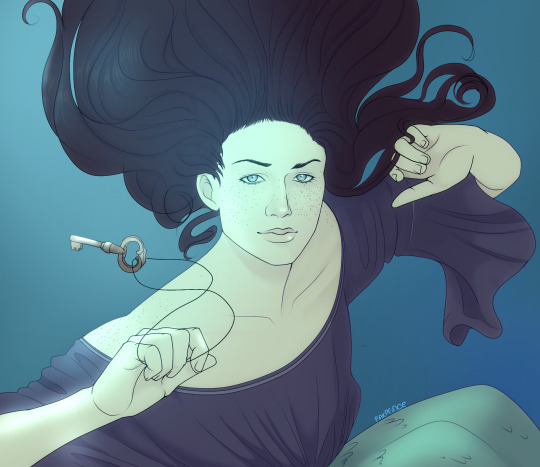
Dahut-Ahes of Brittany :)
#my art#artists on tumblr#celtic mythology#dahut#ahes#legend of kys#breton mythology#french folklore#breton folklore
3 notes
·
View notes
Text
3rd March
St Winnol’s Day

Source: Dreamstime.com
First comes David, then comes Chad,
Then comes Winnol, roaring like mad.
This folklore rhyme is just about all we know know about St Winnol, whose day it is today. He was a Breton saint in origin, named Winnaloe, and was a fierce ascete, insisting that his brothers join him in wearing hair shirts and prostrating themselves in front of the Lord. Winnol also had strange miracles attributed to him, including possession of a mysterious bell which, once sounded, would result in all the fish in a stream coming to him, and an ability to carry churches. Apparently the churches at East Portlemouth in Devon, and Lizard in Cornwall, owe their locations to Winnol.
Unsurprisingly, it is highly unlikely that Winnol ever existed.
1 note
·
View note
Text
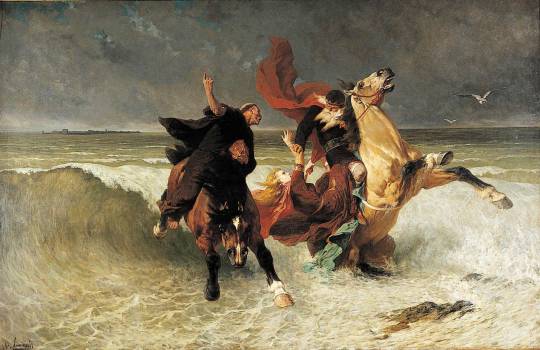
The Flight of King Gradlon, oil on canvas made around 1884 by Evariste-Vital Luminais
King Gradlon and the Legend of Ys:
"King Gradlon (Gralon in Breton) ruled in Ys, a city built on land reclaimed from the sea, sometimes described as rich in commerce and the arts. He lived in a wealth palace of marble, cedar and gold. In some versions, Gradlon built the city upon the request of his daughter Dahut, who loved the sea. To protect Ys from inundation, a dike was built with a gate that was opened for ships during low tide. The one key that opened the gate was held by the king.
Some versions, especially early ones, blame Gradlon's sins for the destruction of the city. However, most tellings present Gradlon as a pious man, and his daughter Dahut as a sorceress or a wayward woman who steals the keys from Gradlon and opens the gates of the dikes, causing a flood which destroys the whole city. A Saint (either St. Gwénnolé or St. Corentin) wakes the sleeping Gradlon and urges him to flee. The king mounts his horse and takes his daughter with him, but the rising water is about to overtake them. Dahut either falls from the horse, or Gradlon obeys a command from St. Gwénnolé and throws Dahut off. As soon as Dahut falls into the sea, Gradlon safely escapes. He takes refuge in Quimper and reestablishes his rule there." - Gradlon wikipedia article
#Evariste-Vital Luminais#art#The Flight of King Gradlon#bretagne#legend of ys#breton#breton folklore#brittany mythos
1 note
·
View note
Text

Demat!
For the month of April, I am undertaking a special project to "solidify" Kroashent while I continue to work on the novel and the art. For the month, I will be making a special focus on developing and sharing the "Bestiary" of Alvez, showcasing the flora and fauna of the world of Kroashent. I hope to shift the focus each month with looking into characters, magic systems and geography, among others.
A lot of people have asked about the creatures of Alvez, and I always feel like my explanations are rather long-winded, daunting infodumps. It seemed like a great place to start to make my work a little more engaging.
Those familiar with my other work may be familiar with "Marie's Bestiary", a similar themed project sharing this information with in-universe commentary by the wandering troubadour. For this project, I'll be following a similar pattern, sharing the WorldAnvil Wiki pages. While I eventually hope to illustrate each of these entries, but for now, I'll be posting the entries themselves.
As always, feedback and inquiries are very helpful! I am always looking for ways to improve and flesh out my setting and stories and love enthusiastic engagement! I put a ton of work into these and hope you enjoy them!
--------------
Next up, by special request, the Teuz, the Korrigan of the Meadows
--------------
BTS: The Fairies of Brittany are the Korrigan, a diminutive magical people who inhabit the region. The Korrigan are numerous and varied, and often the terms are used quite interchangeably. Many Korrigan are portrayed in popular imagery as leprechaun-like dwarves, sometimes with horns, pointed ears and goat-like hooves.
In Alvez, there are many kinds of Korrigan, drawing from imagery that I have found in my research any my own interpretations. For the meadow-dwelling Teuz, I went with this faun/satyr like design as a nod to this popular imagery, as the Teuz are the most populous Korrigan people in Alvez, and the closest to humanity in terms of their living space. They live an agrarian lifestyle, similar to most rural peasantry, and take part in all walks of daily life in the region.
0 notes
Text
MY Holy Trinity™ of esc


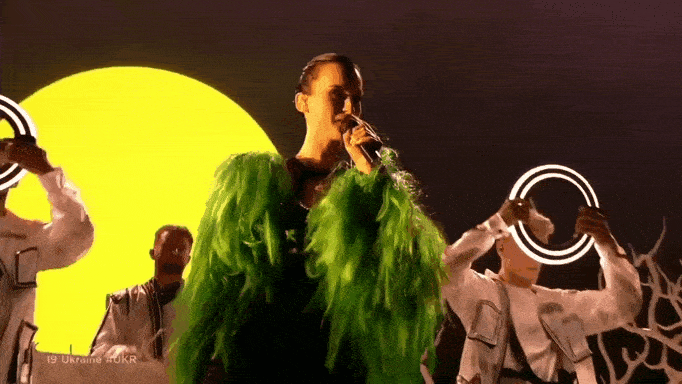
#i call this specific vibe 'music to listen to while performing pagan rituals in the woods'#it's about the 🌱🕯️✨FOLKLORE✨🕯️🌱#no but seriously shoutout to go_a alvan & ahez and pasha parfeni for bringing songs about the folklore of their respective cultures to esc#AND sung in ukranian breton and romanian!!!#go_a#shum#Шум#alvan & ahez#fulenn#pasha parfeni#soarele şi luna#eurovision#eurovision song contest#eurovision song contest 2021#eurovision song contest 2022#eurovision song contest 2023#esc#esc 2021#esc 2022#esc 2023#my gifs#my gifset
796 notes
·
View notes
Text

Breton folklore garments and the chapel of La Clarté, Perros-Guirec, Brittany region of France
French vintage postcard
#vintage#folklore#tarjeta#france#old#briefkaart#breton#chapel#postcard#la#photography#region#postal#carte postale#garments#sepia#ephemera#perros#brittany#historic#french#ansichtskarte#guirec#clart#postkarte#perros-guirec#postkaart#photo#la clarté
6 notes
·
View notes
Text

@ascensionkick
this is the new Touhou OC guide.
Also this reminds me, I showed my grandma my Forbidden Scrollery manga (i was so proud that a touhou works finally got officially localized in french) and she pointed at Marisa and asked if she was wearing an Alsace folkloric costume
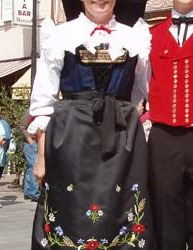
and huh yeah. YEAH I DEFINITELY SEE WHY SHE THOUGHT THAT
74 notes
·
View notes
Text

The nocturnal demon that wanders the countryside, his appearance is that of a wild man or troll.
Interestingly, his candle-holding hand has been compared to the Hand of Glory legend.
#BriefBestiary#bestiary#digital art#fantasy#folklore#legend#myth#mythology#yan-gant-y-tan#demon#breton folklore#breton legend#demon folklore#nocturnal demon#night demon
13 notes
·
View notes
Text

started sketching my water fairies after years of just doodling them in my lore notebook. anyway they're one of my favourite species on fjallmor i love them
#yes they're inspired by a mix of breton and irish folklore like selkies and breton water fairies spiced up with stuff i made up#i should really make posts on fjallmor and its lore i made a sideblog i never touched lop#lol*#fjallmor#my art
3 notes
·
View notes
Text

💀The Ankou is back in town 💀
#my art#oc:mona#rough doodles#wormwood family#ankou#art#skeleton#french legend#french side of tumblr#folklore breton
1 note
·
View note
Text
Deadly fall: More about the Ankou
More about the Ankou
Category: Breton folklore / French folklore
Freely translated from “The Legend of Death” by Anatole Le Braz
Chapter 3: The Ankou
The Ankou is the “oberour ar maro”, “the worker/employee of death”.
The last dead person of the year in every parish becomes the Ankou of this specific parish for the next year. When there is more death than usual during the year, it is said “War ma fé, heman zo eun Anko drouk” (On my faith, this is a nasty Ankou).
The Ankou is usually described as a very tall and very skinny man, with long white hair, and the face hidden by a wide hat – however he can also appear as a skeleton wrapped in a shroud, whose skull keeps turning around like a weather vane, in order to see everyone around him and not have anything escape his gaze. In both gazes, the Ankou holds a scythe. But it is not a normal scythe, because the cutting edge of its blade is outward instead of inward – as such the Ankou doesn’t reap by closing the scythe towards him, but rather by throwing it in front of him.
The cart of the Ankou (called the “karrik ann Ankou” or “karriguel ann Ankou”) looks like the same type of carts in which dead bodies used to be carried. It usually has two horses pulling it, advancing in line : the one in the front is lanky and scrawny, skinny and weak, while the one behind it fat, with a large neck/shoulders and shiny hair. The Ankou doesn’t sit in his cart – he stands up. The Ankou has two companions that walk near the cart: one holds the horses, the other opens the doors in front of the Ankou (the doors of fields, of courtyards, of houses) – the second one is also the one who puts in the cart the dead that the Ankou reaped.
It is said that when the Ankou starts his collect, his cart is filled with stones, so that it goes slowly and makes a lot of noise. When he arrives near the house of someone about to die, he throws away the rocks, to make place for his new “cargo”. And as a result it is believed that if someone is not well and your hear the tumbling of rocks outside, it means the person will soon die.
It is said that the Ankou uses a human bone to sharpen his blade. Sometimes the Ankou needs to straighten out or improve his blade, and he asks the services of the smiths who keep their forge lit and keep working Saturday evenings, especially after midnight (something normally forbidden, as it is the start of Sunday, the holy day of rest). A smith who works for the Ankou will never work for anyone else.
The Ankou is said to have two “purveyors”, female entities that give him his death. The first is “ar Vossenn”, La Peste, aka the Plague. The other is “ar Gernès”, (Costliness) usually translated as “La Disette” (Scarcity/Shortage/Dearth). Once there was a third called “ann Deok holen”, the right on salt, also known as la Gabelle (a high salt-tax that existed in France). But the duchess Anne put an end to this tax in Bretagne and thus killed the third purveyor of the Ankou.
The Plague (ar Vossenn) has a limp, and yet can run as fast as wind – but she cannot jump over rivers. She can only cross by asking a kind man to carry her on his back. In Plogoff, it was said that the Plague was seen once – there was a boat going near the coast, with black sails. When the boat arrived at the level of the Parkou-Bruk valley, white smoke came out of it and took the shape of a woman – she floated in the air above the waters to reach the coast, and it was Plague herself, who quickly spread in one day around the region. As for Dearth, she is said to always “last longer than the bread”.
In olden days, to reach farms isolated in the countryside, there was just small and unkept dirt roads called “garennes” : it was the roads people used to go to mass on Sunday, but also the one used by the dead to go to the cemeteries during funerals. When the rains of winter worsened these already bad roads, people rather passed by the fields bordering them. From this ancient time, there are still numerous trails going around or out of old roads, often bordered by small stepstones to help get out of them or get on them. But as times passes, new, better roads were builded, and the old ones were abandoned by the living… But not by the dead, for they were still used by funeral convoys – because it was a sacrilege to force a dead to take a different road than the one his father, grandfather, grand-grandfather and other ancestors had taken. [Fun fact: in Bretagne the order of ancestors was father, grandfather, oldfather (grand-grandfather), and sweetfather (grand-grand-grandfather). These roads, only used for funerals, became known as the “roads of death” (hen tar Maro), and it is said that anyone who dared to block them would face great misfortune. It was forbidden to run or scream on them, so as to respect and not disturb the dead, and it was on these small, bad roads that you had the most “chance” of meeting the Ankou’s cart.
It is said that when a new house is built, the Ankou comes sitting on its doorstep, to wait for the first person that will cross the threshold, so that he might kill them. The only way to chase him away is to rather offer him the life of an animal – and while before people forced a pet (dog or cat) to cross the threshold before any human, people took the habit of just using an egg about to hatch. But some traditions were much more violent : in Quimperlé the habit was to kill a rooster and spill its blood on the foundations of the house.
- - - - - - - - -
The book also includes a lot of traditional and folkloric tales about the Ankou, that I won’t translate but here is their brief idea:
# A story is about a curious young man who attempts to spy on the Ankou’s cart as he hears it coming one night – only for him to be overtaken by a deadly fever the following morning.
# A story is about a man who, one evening, has to carry a heavy bag of potatoes to an old woman. As he rests near a cross he sees a cart led by a tall and skinny man with a wide dark hat. The cart keeps squeaking and is pulled by extremely lanky and bony horses. The man, tired of the bag, tries to ask the driver to carry it for him, but he doesn’t answer, and when the man tries to put the bag on the cart is just passes right through, as if the wood had no solidity. It is only the following day, upon learning that someone in the village died, that he understand he met the Ankou.
# A man who is telling stories to entertain a sick and dying one neighbor stays at his house, in a guestroom. He wakes up in the middle of the night, as the moon is bright in the sky, and notices the window is open. He goes to close it, but sees in the courtyard of the neighbor’s house a tall, skinny man with his face hidden by a large hat, walking back and forth as if waiting, with near him a hastily-built cart pulled by horses with manes so long they drag on the ground – and the cart is filled with human arms, legs and heads. He hides away from the sight of this dreadful creature, only to notice that another entity just entered the house through the backdoor, even taller and skinnier than the first, with an extremely small head with a large smile going from ear to ear, no nose, and instead of eyes two small white lights. This second entity goes to the bedroom of the dying man and the storyteller sees him get up and escort the creepy entity. The following day he is found dead.
# A blacksmith, who has some late works, decided on Christmas Eve to not go to the Midnight Mass and to keep working. His wife doesn’t like this idea, but agrees at the condition that he stops working before the end of the mass. However the man overworks, and a man with a shrieking voice and a face hidden by a large hat appears at his door. The tall, hunched man tells him he needs his services urgently: he needs his scythe to be solidified, because the blade is shaky. The blacksmith decides to help the man, and he notes that the blade is backward but the client insists that he should just correct the shaking of the blade, not turn it around. When the work is done, the man, who is revealed to be the Ankou, pays him not with money, but with a warning: the warning that tomorrow, he should ask his wife to get him a priest to receive the last rites. For this work was the last he would ever do.
# A generous and rich man one day decided to invite a whole village to a feast, because he had just killed his biggest and fattest pig, and organized a “boudin feast” (ar gwadigennou). To announce this, he waited at the end of the mass, and perched on the staircase leading to the cemetery, he loudly announced his feast and how he invited everyone. Absolutely everyone – and he heard a small, high-pitched voice ask him if they were also invited, and he said yes, but could not see who spoke it. When the feast happen it was a grand celebration, with a lot of people, rich or poor, lot of meat and lot of alcohol. But the last guest to arrive at the feast was someone everyone took for a beggard : he had an old and worn-out black robe, almost in tatters, and he smelled like rot. He was yet welcomed like everyone else – but he barely touched the food he was given, he refused to speak to anyone, and he kept his head facing the ground, refusing to look up at other people. The feast went on, and everyone left one by one… except for the beggar man. The generous man thought it was normal : he was the last to arrive, he would be the last to go. But he noticed that his plate and cup were turned-upside down and so he asked him who he was… And there the man raised up his head, revealing a skull, and he cast away his rags, which revealed a body of rotten flesh ; and the guest revealed himself to be the Ankou, that the generous man had carelessly invited near the cemetery. But, as he was kind and generous to the Ankou, the Ankou offers him a gift of knowledge : he reveals to him that he has only eight days left to live, and it is not negotiable. And the Ankou promises that when they will meet again, the generous man will be the guest of the Ankou’s own feast, “not as grand as yours, mind you, but at least there will be much more people!”.
# A man returns to his home to find his wife and servant terrified. They claim that the Ankou’s cart passed by, for they heard a squeaking, creaking cart, as well as big, heavy hooves – and this terrifying cacophony lasted five to six minutes. The man thinks it is ridiculous, because the women refused to look outside and so did not saw actually what was making that noise – he thinks it is just a random cart, but the women claim they heard it passing by the old “road of death” nearby, and given no funerals were organized, they are certain it was the Ankou. The man thinks they are just silly… until later that days he meets a neighbor and discovers that his young daughter suddenly passed away this morning.
# Three young lads, foolish brothers, decide one day to have “fun” by putting a big tree trunk in the middle of an old road, to block it. But the evening, someone loudly knocks at their door : they open it, yet there is nobody outside, and they can’t close the door! All three of them try, to not way. Terrified, they ask who is here, “in the name of God answer”, and a deep voice warns them that they need on the instant to move the huge tree they placed on the road. The brothers, terrified, run to the road through the cold night and find the Ankou with his cart waiting by the tree. They promptly remove the trunk, but the Ankou tells them “Because of your foolishness, you made me lose an hour in my journey. You each own me one hour, and if you hadn’t obeyed to my command and unblocked the road, I would have taken of your life as many years as the minutes I had to wait for the road to be free.”
# A man had recently a new house built for him, but when he enters it he finds a dark and shadowy silhouette waiting for him. He asks who is the man, but the person refuses to answer or look at him, and doesn’t move. He asks three times, and it is only on the third time that the man finally reacts. He raises his head, revealing that he has no nose and empty eye sockets, and he says “I am your master and the master of all.”. The man, recognizing the Ankou, fled and never returned to his new house.
11 notes
·
View notes
Text
Tasseographic Tales
I've been trying out tasseography, or the art of learning tea leaves. Being who I am I did a bit of a literature review and there's surprisingly little written about it in the folklore/anthropology community. Where's the stories of cup-turners from days of yore? Of the snippets I did find, this story from Cape Breton stood out:
Prediction from tea leaves Mrs. Morris says she learned from an Indian woman. Mrs Morris gives you a half cup of tea to drink, telling
you after you drink to turn the cup upside down and around, clock-
wise, so the handle is towards you. From the position of the tea leaves and the amount of tea drops left in cup the "fortune" is told. She told me: I was to have a railway journey, - one leaf had fallen out
of the cup. The other leaves formed a "crown," that meant money,
"plenty money, yes, Mistress, that true, money comes in, by different
branches." My husband was coming (as I had told her). He was a good man, he did not care about whiskey at all - there were few drops of tea left in the cup, many drops mean whiskey. I had a happy home, nothing happening in it until I came back, "to bring great news to them there," as my "vacation can't be beat, - what you work at now I don't think ever person heard it before." Mine was what Mrs. Morris called a "pretty cup, not many leaves." Many leaves in the bottom of the cup meant "badness, lots of company," one leaf in the bottom meant a coffin, death. You would not want to tell leaves often, remarked Mrs. Morris, it makes you tired. At that, she is not proficient, she thinks, as she had not had a strong enough heart, enough courage, in the beginning. When you begin to practice you should go out on a perfectly cloudless day, clear, clear, and "give your cup to the Sun, raise it up to Sun." Then in it "you will see tea leaves moving just like people, see a man in the cup. Vou must tell him what you want." Mrs. Morris added, "I didn't speak to that man the first day I seen him. I have not a strong heart, to speak to him. I can only tell a little of it."
This was from a 1926 article from the Journal of American Folklore, by an Elsie Clews Parsons, listed by jstor as "Micmac Notes. St. Ann's Mission on Chapel Island, Bras D'or Lakes, Cape Breton Island."
There are some interesting takeaways here, at a glance. For one thing, its much more detailed than other accounts I've found so far. It's also apparently collected by a woman, something uncommon at the time.
The fact that this Mrs. Morris learned tasseography from an indigenous woman is also interesting. What I've read so far implies that in North America, the art of reading tea leaves comes from Ireland and the UK. Cape Breton especially has firm Scottish influence. Perhaps this is an example of how, while indigenous people have their own distinct culture, they often are also part of the local dominant culture. And/or that the different groups pick things up from each other. People more expert in this than I have written much more eloquently about the subject though.
As for the specifics of the tasseography practice here, well, I'll let it speak for itself. I'm a newbie after all.
1 note
·
View note